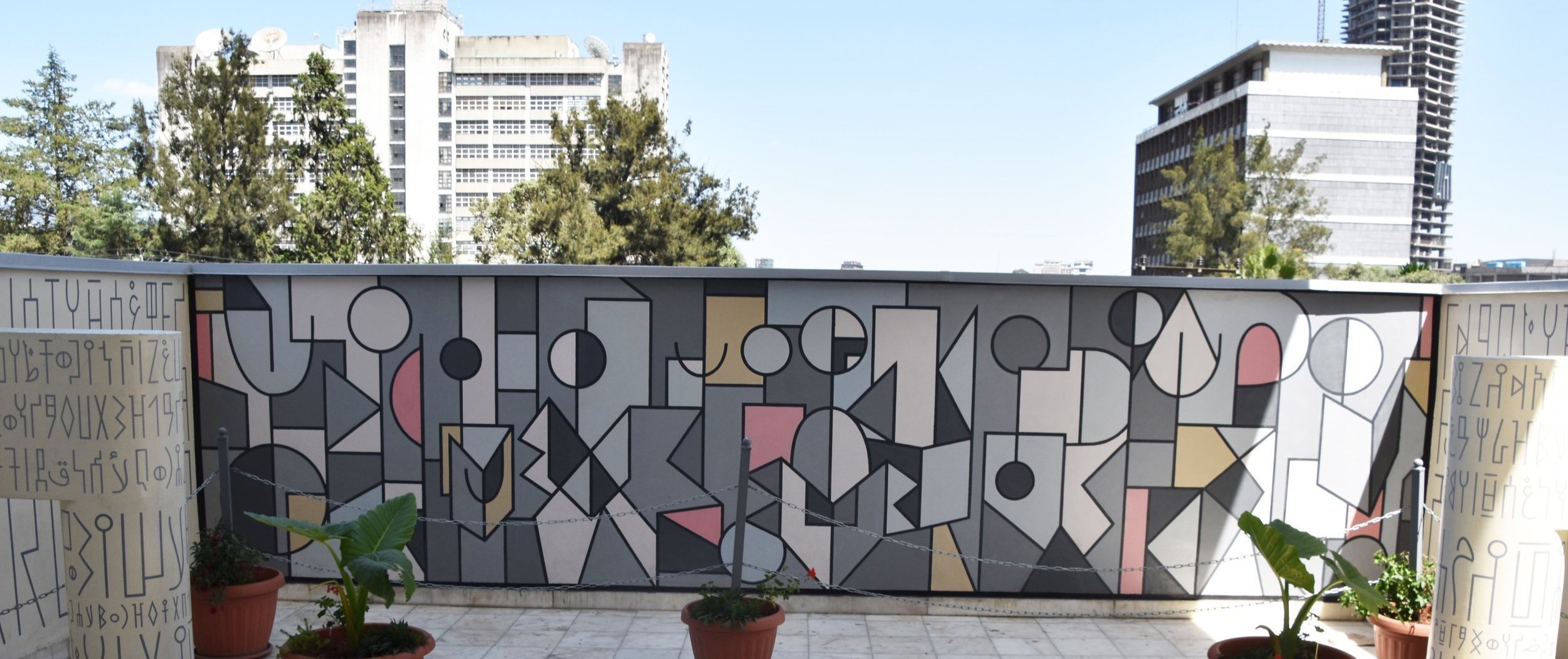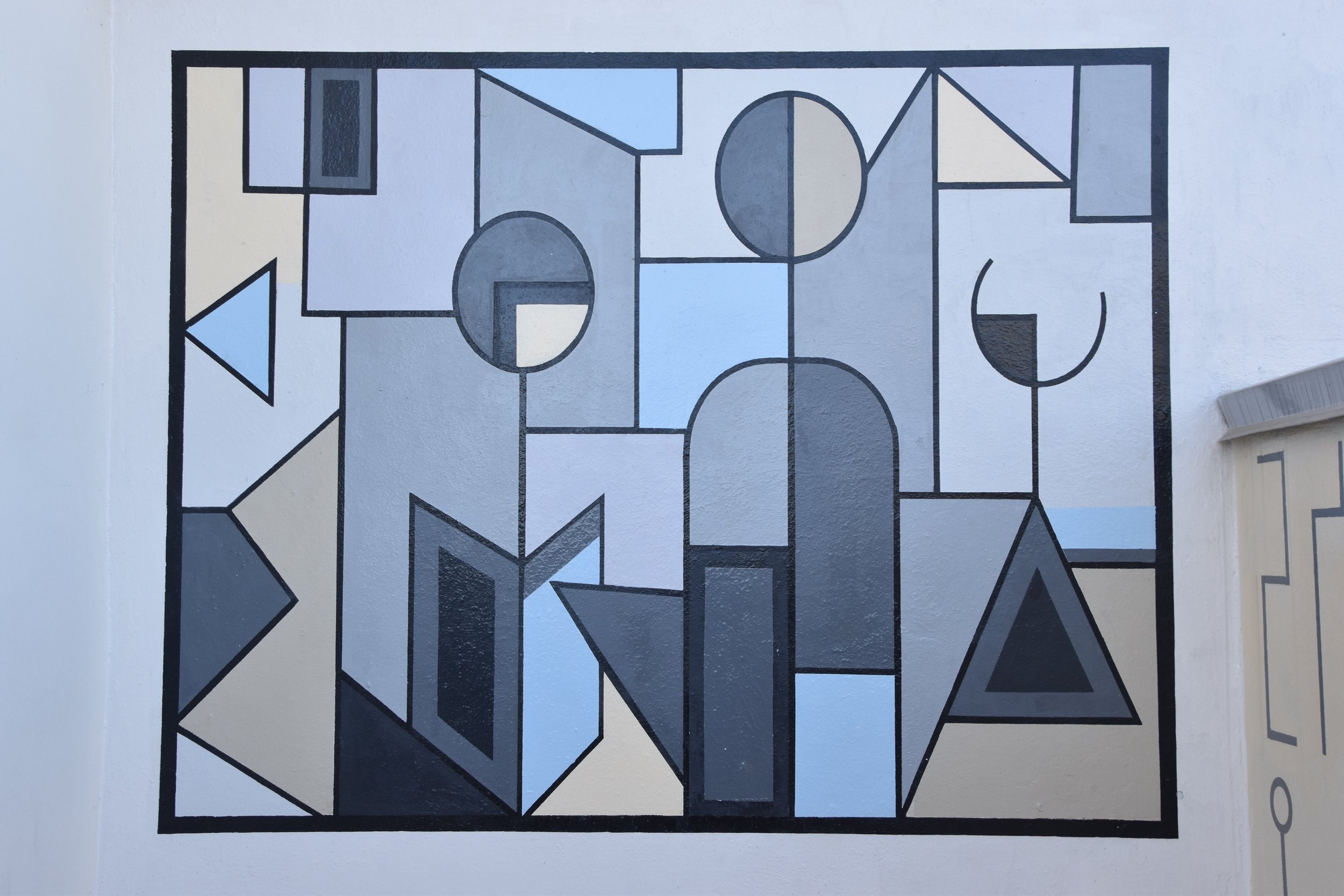
nala project
Guenet Abraham, Fulbright Scholar 2017-18, 2018-20, Ethiopia
During my Fulbright year at the Alle School of Fine Arts and Design, Addis Ababa University (Ethiopia), I conceived this project.
I invited students from two different colleges, the Alle School and the Architecture school EiABC (architecture and building construction), to collaborate to improve the three-floor entry to The National Archives and Library Association, NALA, in Addis Ababa. I felt this high-traffic public institution needed a facelift. With a little bit of imagination, paint, and brush, I proposed we get to work.
[Above]: Most of the walls looked like this. Although the walls were repainted every few months, the public's lack of upkeep and inappropriate usage of walls (shoe and hand stains) made the whole space depressing.
The concept highlights and celebrates Ethiopia's rich history and diversity through its writing system to engage the public and provide a space all visitors can enjoy. In the process, I wanted to engage the public on exploring one's own local and traditional history to tell a story to a contemporary audience without compromising the integrity of the material, using various mediums. In this case, we used graphic design as our medium.
The final forms represent the alphabets used at different times in Ethiopia: Sabean, Ge-ez, Arabic, and Latin. Although Latin is not the traditional or national written alphabet, it is included as it is the international language taught in Ethiopia. These utilitarian forms are meant to be read as letters and seen as visually dynamic, pleasing, and coherent images. None of the alphabet's forms are altered for the sake of design. But they were redesigned to create a cohesive and uniform look.
No line represents any single word, sentence, or meaning.
The large abstract composition on the second floor references the learning environment that NALA provides. To avoid a jarring transition, we chose to use forms related to the letterforms framed by on the left and right walls.
This project took nine months to complete and generated a huge amount of public engagement and media interest.
The art students who participated in this collaborative project were Desalegn Tesfaye, Milkiyes Abebe, Muluadam Adane, Noh Abebe, Tewodros Kiflem and Yidnekachew Mulugeta. The architecture students were Israel Teshome, Niud Hadish, and Ruth Bekele.



















